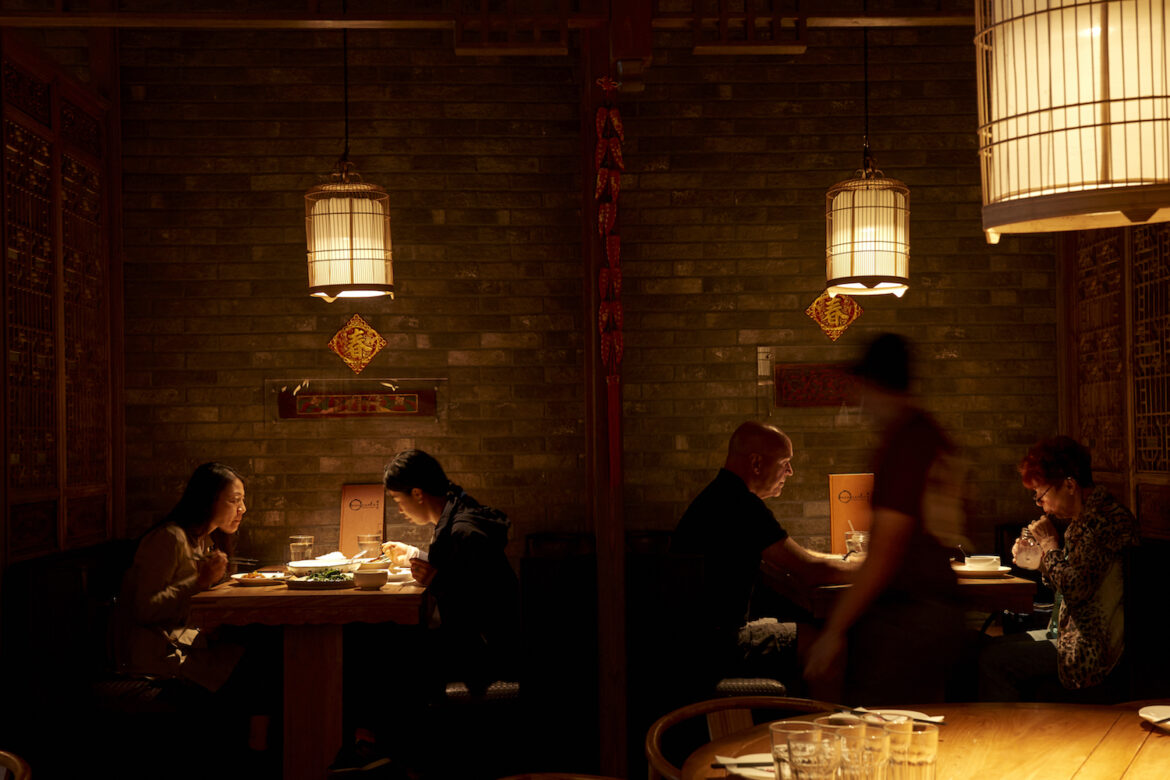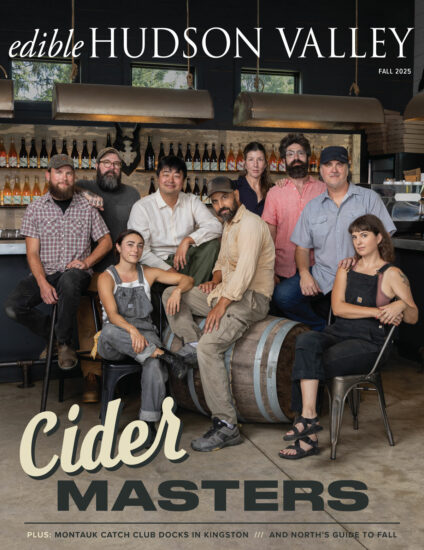Shanghai, China to Hartsdale
When Peter Liu came from Shanghai to study business at the University of New Orleans, he was leaving a town with an incredibly cosmopolitan food culture. Shanghai, prior to the Cultural Revolution, was the jewel of modern China; regal architecture from the same zeitgeist that spawned NYC’s Chrysler and Empire State Buildings still stands on Shanghai’s Bund. Nowadays, those magnificent Art Deco facades reflect in the Huangpu River alongside shimmering Rolex shops. There, restaurants sling arm-long tasting menus to “crazy rich Asians” with roomy expense accounts and the desire to impress.
Given Shanghai’s urbanity, it’s remarkable that when Liu visited Commander’s Palace in New Orleans, he was surprised to find a high-toned restaurant that served American cuisine. Knowing only what passes for American food abroad, Liu had assumed that the entirety of our food culture was burgers, shakes and fries. Now, in a kind of karmic retribution, Liu is on the other side of that prejudice. At O Mandarin in Hartsdale, Liu is trying to show Americans that Chinese cuisine is not just storefront takeouts, egg rolls and General Tso’s.
Like many immigrant restaurateurs, Liu is up against a rigid American mind-set that insists that most non-European cuisines should come cheaply and without frills. Then there is the fact that Chinese diners appreciate a far wider spectrum of tastes and textures than Americans do. As a nation of palates, we’re likely to balk at the sting of bitter melon or the gelatinous slip of chicken skin as it is sucked from the tiny bones of a claw. But perhaps Liu’s biggest challenge is that Americans are already devoted to something they call “Chinese food” and that bears little relationship to any cuisine in China.


O Mandarin vs Other Chinese Restaurants
Liu, who at the time of this writing is in his 30s, shares a lot with American-born restaurateurs his age. He’s cocky. When I mention other local Chinese restaurants, he dismisses them with a stonerish “they suuuuck.” He’s tattooed. Whenever Liu returns to New Orleans—which is often—he tags himself with a fleur de lis. And, like most young restaurateurs nowadays, formal fine dining leaves him cold; he’d rather commandeer a round table with eight of his friends and eat, laugh and drink all night. Growing up, he was a well-off kid (he says he was “spoiled”), destined for a career in business—but, like so many in the industry, he was seduced by restaurants. His parents were not thrilled.
In the way that Americans make pilgrimages to the barbecue belt or the Deep South to experience the essence of American cuisine, Liu is a city boy who made (and continues to make) a study of the Chinese provinces. “I go to villages. I look at the ancient cities. I want to experience the deep soul of Chinese culture.”
This is not romance; it’s business. “I’ve been here for 20 years—and I’m pretty westernized. I know that Americans are more interested in soulful, country food.”
Liu is betting that Americans are ready for regional Chinese cuisine served in something more than bare-bones restaurants. While it’s not expensive, no one would call O Mandarin cheap; it’s full of Chinese antiques, its lighting flatters. Takeout bags do not fly out its doors.
Says Liu, as if it’s the most obvious thing in the world (because it is), “This is how it’s supposed to be. This is how we serve Chinese people in China—in a nice-looking room.” There is a heavily insinuated “duh.”


Until recently, there were few Mexican restaurants in this country that could ask for—and get—the prices earned by French cuisine. The same was true of even Italian restaurants, which, as late as the 1970s, meant red sauce parlors with checkered tablecloths and carafes of cheap Chianti.
The sea change for Italian restaurants in the U.S. came with regionality. In the 1980s, a new trend for Northern Italian cuisine exploded on the coasts. Suddenly—maybe because it was novel—diners were willing to splurge on fine Italian wines, opulent rooms, and pricier ingredients. As Liu observes, “It takes some time. You know, Italian food in this country was once just spaghetti and meatballs.”
“At O Mandarin, I’m not just saying this is Chinese food. It’s regional. It’s Mandarin, which is more inland. You know, it’s spicy.” To contrast, Liu cites the first regional Chinese cuisine to hit the U.S. (and which many Americans know as “Chinese food”): “It’s not Cantonese.”
Liu Looks to the Future
Liu is on the verge of opening another, bigger O Mandarin on Long Island. He’s also got his eyes on Manhattan, where he plans to serve the riotously diverse street foods of many Chinese cities. But Liu’s other dream is to open something akin to the former Ramen Lab, which had no resident chef. Instead, its tiny NoLiTa space hosted ramen chefs from Japan (and all over the world) for limited pop-ups. Liu’s version would host a series of superstar Chinese chefs who visit NYC to cook for a couple of weeks using the finest domestic and Chinese ingredients. “I’m not trying to make money on this idea, but I want Americans to know what real Chinese food is.”
If you drop in to O Mandarin, it’s likely that you’ll find the large dining room packed with families, couples, Chinese people and Americans. Many come for dishes that are scarce outside of Flushing: roiling hot pots, slippery beef tendons and cool, resilient tofu skins in numbing Sichuan peppercorn oil. But Liu sees himself as a cultural bridge, so he makes concessions. He’ll swap out the traditional wheat for rice noodles so that gluten-free customers can enjoy his heady dan dan mian. And for every few dishes of beef tripe or savory rice bean jelly, he offers a sanctuary dish of, say, kung pao chicken or beef chao mein.
“I feel that right now, we’re about 85% Chinese and 15% American—which is still pretty good. You know, our chili oil stew is not as spicy as it is in Chengdu, but that just means we try harder to make to make the flavor more complex.” He laughs, “And it’s not like I’m giving them chicken feet. Yet.”
University of New Orleans | @uofno
O Mandarin | @omandarinwestchester
This story was originally published to Edible Westchester in December 2018.



